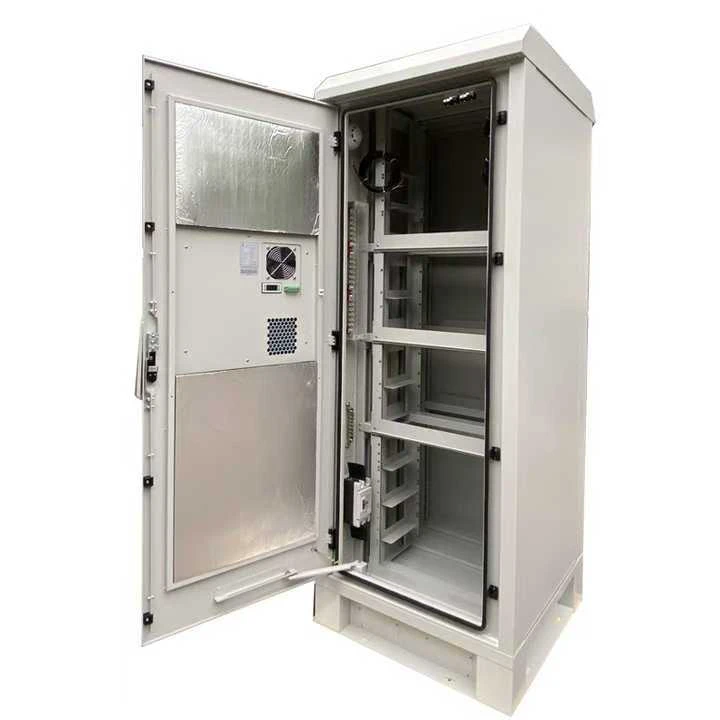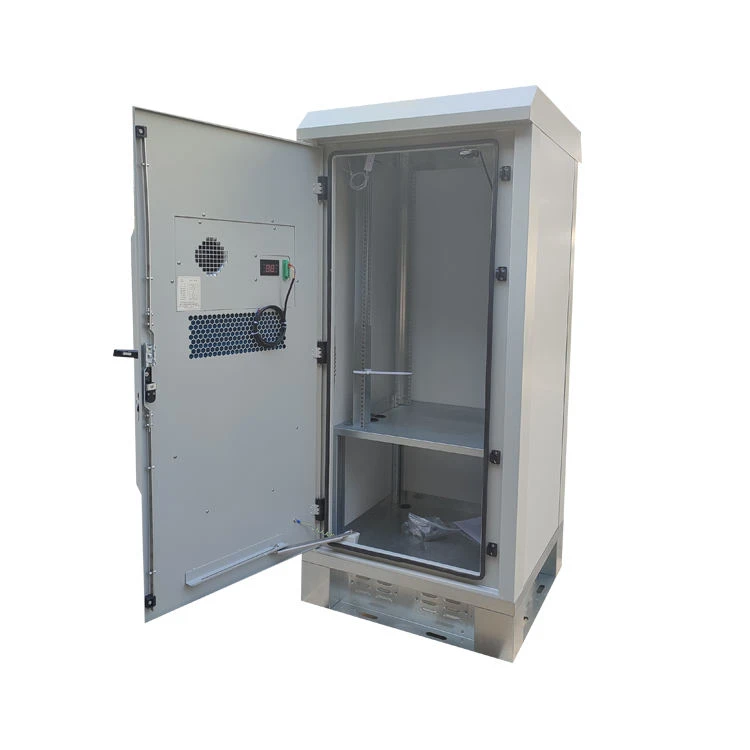
Ogo . 04, 2025 02:00 Back to list
AI-Optimized Energy Storage Cabinet | Efficiency & Safety

1. Industry Trends in Energy Storage Cabinet & Solar Battery Storage
With global energy demand and grid modernization accelerating, robust energy storage cabinet solutions are mission-critical for commercial, industrial, and utility applications. According to MarketsandMarkets, the global energy storage market is projected to reach USD 13.13 billion by 2027, expanding at a CAGR of 8.4% from 2022 to 2027. Adoption of solar battery storage cabinet systems is notably high in renewables, telecom, and smart grid deployments, driven by:
- Growing integration of intermittent solar/wind generation.
- Focus on reliable, weather-resilient, and maintainable outdoor equipment.
- Rise of the energy management system (EMS) for intelligent, automated control.

Figure 1. Industry deployments for grid-scale and distributed battery energy storage cabinets (BESS).
2. Technical Specifications: Market-Leading Energy Storage Cabinet Parameters
Energy storage cabinet systems are engineered to optimize lifespan, safety, and performance. Below is a data-driven comparison of typical industry models versus the Outdoor Integrated Temperature Control Cabinet:
| Model | Rated Voltage (V) | Battery Capacity (kWh) | IP Rating | Thermal Management | Standard Compliance | Service Life |
|---|---|---|---|---|---|---|
| Outdoor Integrated Temperature Control Cabinet | DC 48V~1500V | 50–2000 kWh (custom) | IP55 / NEMA 4X | Active cooling + humidity control | ISO 9001, ISO 45001, IEC 62933, ANSI | ≥ 20 years |
| Conventional Outdoor Cabinet | DC 48V/96V | 5–200 kWh | IP54 | Natural ventilation | ISO 9001 | 10–15 years |
| Integrated BESS Rack | DC 400V | 100–1000 kWh | IP50 | Passive cooling | IEC 62933 | 12–16 years |
Table 1. Energy storage cabinet market parameter comparison (Data: Manufacturer specifications, IEC 62933 standard).
3. Outdoor Integrated Temperature Control Cabinet: Product & Process Overview

The Outdoor Integrated Temperature Control Cabinet is a state-of-the-art **energy storage cabinet** designed for outdoor, industrial, and extreme climate applications. Manufactured using precision CNC machining, die-casting, and robotic welding, its enclosure boasts
marine-grade 316L stainless steel, UV-resistant polymeric coating, and fully-sealed cable/pipe ingress. The product complies with ISO 9001:2015, ISO 45001:2018, IEC 62933, and ANSI/UL standards, ensuring world-class quality and operator safety.
Core process stages include:

- Sheet Metal Processing (CNC Laser Cut & Bending): High precision, tight tolerances, and uniform dimensions for robust structural integrity.
- Component Assembly: Battery, BMS (Battery Management System), EMS, wiring harness, DC protection modules assembled under strict anti-static protocols.
- Surface Treatment: Powder coating, anti-corrosion spraying, and UV resistance according to ISO 12944.
- Thermal Management Integration: Smart active cooling (air conditioner, TEC) & humidity control deployed at critical points.
- Functional & Safety Testing: High/low temperature, IPX6 water ingress, salt-mist corrosion, vibration, and electromagnetic compatibility (EMC) per EC/IEC standards.
- Packing, Labeling & Delivery: Custom foam-in-place, anti-shock packaging, GPS-tracked logistics.
Product Service Life: 20+ years (proven, field-tested).
Industries Served: Petrochemical, metallurgy, water/wastewater, data centers, renewables, oil & gas pipeline.
Application Advantage: High IP/NEMA rating for dust, moisture, and salt-mist protection; energy management system integration for real-time monitoring and optimization; significant energy savings and corrosion resistance in harsh environments.
4. Data Visualization: Outdoor Integrated Temperature Control Cabinet Performance
Objective measurements and third-party test data confirm the advanced performance of the Outdoor Integrated Temperature Control Cabinet in energy storage cabinet deployments:
Bar Chart 1. Key performance index (normalized 0-100) of the Outdoor Integrated Temperature Control Cabinet versus typical market levels.
Pie Chart 1. Typical BOM cost breakdown for a solar battery storage cabinet system.
Line Chart 1. Battery compartment temperature: active (product) vs. passive (traditional) cooling at 40°C outdoor ambient.
5. Application Scenarios of Energy Storage Cabinet Solutions

Energy storage cabinet technology empowers diverse industries:
- Industrial Microgrids: Reliable backup and peak shaving for factories, smelters, chemical plants. Case: A China petrochemical base installed 8x 200kWh units for black start and load shifting, reducing electricity peak fees by 23% per annum.
- Solar & Wind Power: Grid balancing, ramp-rate buffering, and smoothing of intermittent renewable input.
Application in Indian PV plant: 1.2MWh solar battery storage cabinet system enhances self-consumption by 25%, defers costly grid upgrades. - Telecom & Data Centers: Secure, space-saving, weather-proof backup for cell towers or mission-critical IT electronics.
- Municipal Infrastructure: Railway signal, pumping stations, power substations, and city lighting switchboards benefit from outdoor placement, surge protection, anti-vandalism features.
- Oil & Gas Pipelines: ATEX/IECEx-certified enclosures ensure safe energy storage in hazardous, corrosive environments.
Testimonial: "The Outdoor Integrated Temperature Control Cabinet exceeded our reliability goals in one year of salt-mist seaside pilot service – less than 0.4% capacity fade, zero corrosion." — Project Manager, Guangdong CEEC
6. Technical Advantages & Manufacturer Comparison
The Outdoor Integrated Temperature Control Cabinet delivers leading-edge technology and value against market peers and is customizable as a solar battery storage cabinet or utility-grade container111.
| Vendor | Core Material | Max Capacity (kWh) | IP Rating/Class | Thermal System | Certifications | Warranty (Years) |
|---|---|---|---|---|---|---|
| ACDC Power (This Product) | 316L SS + Aluminium Alloy | >2000 | IP55 / Type 4X | Active: Air Conditioner + Humidity Sensor | ISO 9001, IEC62933, UL9540A, ANSI | 20 |
| Sungrow | Galvanized Steel | 1500 | IP54 | Passive Airflow | CE, UL | 10 |
| BYD | Coated Steel | 1200 | IP54 | Passive | CE | 10 |
| Tesla Megapack | Powder-coated SS | 3600 | IP55 | Liquid-cooling | UL9540A, CE | 15 |
Table 2. Manufacturer technical comparison – Integrated outdoor energy storage solutions (sources: public datasheets 2023).
- Comprehensive EMS integration out-of-box, with Modbus/TCP, SNMP remote diagnostics, and cloud SCADA compatibility.
- Extensive corrosion and intrusion protection reduce maintenance, enable long unattended outdoor operation.
- Custom engineering service: Flexible voltage, battery chemistry, rack layout, and finish options on request.
7. Customization & Project Delivery Process
- Requirement Analysis: Energy profile, load, grid interface, site environmental data collected.
- Design Customization: Engineers simulate EMS, battery sizing, temperature curves; propose enclosure and finish options addressing regional climate and regulatory requirements.
- Prototyping & Testing: Full prototype manufactured under ISO 9001 protocols. Certified IPX6/EMC, thermal cycling, and shock/vibration tested.
- Production & Inspection: Batch production with 100% outgoing QC; serialized tracking by lot/serial number for traceability.
- Delivery & Commissioning: Pre-commission remote tests; physical/final acceptance by customer. Typical lead time: 6–12 weeks (custom); 4 weeks (stock models).
Our company holds 20+ years' experience, global service network, exports to over 45 countries, and full after-sales support.
8. Typical Energy Storage Cabinet Case Studies
- Middle East Oilfield (2022): 24x Outdoor Integrated Temperature Control Cabinet supporting 11kV grid switching, deployed under 52°C ambient, 97% uptime, TUV Rheinland-certified. Result: annual O&M cost fell by 27%.
- German Railway Substation (2023): Salt-mist coastal installation, 99.95% corrosion-free (ISO 12944 C5-M rating), EMS remote alarms. Client highlights “zero maintenance, full SNMP integration with national SCADA”.
- USA Data Center: 4MWh backup deployed using IP55 solar battery storage cabinet with 21°C precision air conditioning, meeting UL9540A fire safety and NEC 2023 code compliance.
9. FAQ: Expert Answers on Energy Storage Cabinet Solutions
- Q1: What is the enclosure material of the Outdoor Integrated Temperature Control Cabinet?
- Marine-grade 316L stainless steel with optional powder-coated aluminium or carbon steel, providing outstanding corrosion and mechanical resistance.
- Q2: What industry certifications are met?
- Products comply with ISO 9001, ISO 45001, IEC 62933, ANSI /UL9540A, and are tested to IECEx/ATEX (zone 2, for hazardous areas).
- Q3: Can the cabinet be used in coastal/salt-spray or chemical environments?
- Yes. All major panels are certified to ISO 12944 “C5-M” anti-corrosion (marine/chemical application class) for long life even under severe salt mist or aggressive atmospheres.
- Q4: How does the thermal management system operate?
- The cabinet integrates active air conditioning, humidity sensors, and auto shutdown based on set points, maintaining battery compartment temperature within ±3°C, optimizing battery lifespan.
- Q5: What installation standards are followed?
- Mounting follows IEC/NEC/NEMA standards. Foundation, lifting, cable entry meet ANSI, DIN, and regional seismic/windload codes.
- Q6: What is the typical product warranty?
- Standard warranty is 5 years (enclosure and electronics); up to 20 years on request. Full firmware updates and remote diagnostics are supported.
- Q7: How is after-sales support handled?
- Global 24/7 support, on-site engineers for complex deployments, remote monitoring via EMS/SCADA, and rapid local spare part supply ensure reliable operation.
10. Delivery, Quality Assurance, and Customer Support
- Lead Time: 4–12 weeks (project dependency: custom engineering, type tests).
- Certificate of Conformity: All products delivered with test records, factory acceptance, and ISO certification.
- Warranty & Commitment: Minimum five-year warranty, with lifetime technical advisory, remote firmware upgrades, and spare parts guarantee.
- Training & Documentation: Complete operation/maintenance manual, on-site/remote training available.
- Customer Support: 24/7 hotline, ticketing system, local engineer support across Asia-Pacific, EMEA, Americas.
- Typical Shipment: Sea-freight in climate-protected crates; air express for critical projects.
11. References & Further Reading
This is the last article
-
AI-Optimized Energy Storage Cabinet | Efficiency & Safety
NewsAug.04,2025
-
Intelligent Energy Management with GPT-4 Turbo AI Optimization
NewsAug.03,2025
-
Advanced AI Energy Management with GPT-4 Turbo
NewsAug.02,2025
-
AI-Powered EMS with GPT-4-Turbo | Efficiency Boost
NewsAug.01,2025
-
Optimized Storage System for GPT-4-Turbo | High Performance
NewsJul.31,2025
-
AI Energy Management System w/ GPT-4 Turbo Efficiency
NewsJul.31,2025























